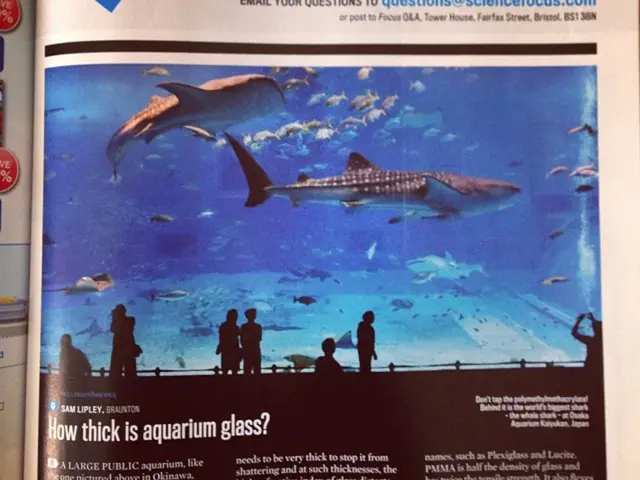Perfectly Preserved Saber-Tooth Kitten Discovered in Siberian Frozen Grounds
Around half a decade ago, researchers stumbled upon an astonishingly well-preserved cave lion cub hidden within Siberia's frozen tundra. Even after 28,000 years, the cub was remarkably intact due to the freezing soil. More recently, another group of scientists discovered a similarly preserved saber-tooth cat cub, shedding light on the Pleistocene Era.
The saber-tooth kitten, unearthed in 2020, is currently undergoing scientific analysis. The discovery includes the animal's entire head and one forelimb, as well as its shoulders, ribcage, and one hind leg. The primary focus of the research was on the mummy's head and dental characteristics to identify the saber-tooth species and explore its geographic distribution and distinct physical attributes. The findings were presented this week in the Nature journal Scientific Reports.
"The analyzed frozen mummified cub supports the modern reconstructions of the Homotherium's appearance based on adult skeleton remains," said Alexey Lopatin, a paleontologist from the Borissiak Paleotological Institute in Russia and lead author of the paper, in an email to Gizmodo. "It also provides additional details—fur color, muzzle size, ear size, foot pad shape, etc.—which cannot be observed in skeleton remains."
Carbon-14 dating of the specimen revealed an age of roughly 31,800 years, making it older than the lion cub found in 2018. In fact, when the oldest cave paintings at Lascaux were being created by humans, the saber-tooth kitten was already deceased for nearly 15,000 years. The research team examined a fresh three-week-old lion cub's carcass for a comparative analysis of the older feline and performed CT-scans on the mummy to visualize its skeleton non-invasively.
Image: Lopatin et al., Scientific Reports 2024 (Left: Mummy photo, Right: CT scan revealing skeleton)
The scientists identified the saber-tooth kitten as a Homotherium latidens specimen. Known as the scimitar-tooth cat, Homotherium was a long-distance running predator with shorter incisors than other saber-tooths such as Smilodon. Homotherium was also less robust than modern lions, with a leaner physique. The discovery supports the existence of Homotherium in Asia during the Late Pleistocene, as stated in the study.
"Therefore, for the first time in the history of paleontological research, the external appearance of an extinct mammal with no modern counterparts has been directly studied," the team wrote.
The mummy's skull showed slight deformities, but its well-preserved right side allowed for an accurate reconstruction of its shape. Moreover, the team observed that the saber-tooth cat's neck was more than double the thickness of the lion cub's, providing insights into the development of adult Homotheriums.
Besides the comparative analysis and the aged specimen, the saber-tooth mummy may provide further insights into ancient history.
"The muscles, bones, and skin are well-preserved in the permafrost ice," Lopatin said. "DNA extraction is our next step in research."
Extracting genetic information from permafrost-preserved specimens has gained popularity due to their exceptional preservation conditions, which allow genetic material to persist for tens of thousands of years. For instance, in 2022, researchers discovered a beautifully preserved baby woolly mammoth in a Yukon gold mine, and earlier this year, a team deciphered some of the mammoth's genomic architecture using chromosomes preserved in permafrost for an astounding 52,000 years—a period when Neanderthals still inhabited the Earth.
Lopatin also mentioned that "new unique mummified specimens have already been found in Yakutia," where the cave lion and saber tooth cat cubs were unearthed. Regardless of the specimen, you can be assured that these mummies will leave you in awe.
The discovery of the saber-tooth kitten's well-preserved fur and physical features opens up possibilities for future technology in the field of genetic analysis. Advanced DNA extraction techniques, inspired by the success with the woolly mammoth, could provide valuable insights into the evolution of extinct species.
Furthermore, advances in technology and science could potentially allow us to resurrect or clone extinct species from their preserved DNA, shaping the future of conservation efforts and our understanding of life on Earth.









